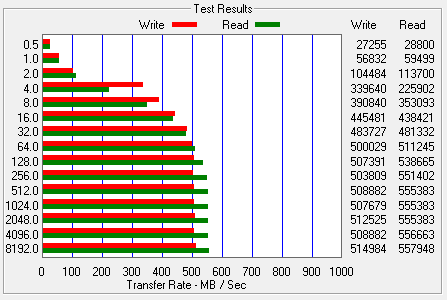Dell Inspiron 14z Ultrabook Review
SiSoft SANDRA, ATTO, & Cinebench
![]()
SiSoft SANDRA
Synthetic General Performance Mertrics


SANDRA CPU Arithmetic and Multimedia Performance


SANDRA Memory and Physical Disk Performance
On the CPU and memory side, the Inspiron 14z posts strong numbers in SANDRA, just as we would expect from an Ivy Bridge processor and high frequency DDR3-1600 memory.
We were so impressed with the SSD performance numbers with our first round of ultrabooks that hit the lab, that we had to double check with ATTO to make sure everything was on the level. Here's how it shook out:

Asus Zenbook UX21

Dell Inspiron 14z
|
Maxon's Cinebench R11.5 benchmark is based on the company's Cinema 4D software used for 3D content creation and tests both the CPU and GPU in separate benchmark runs. On the CPU side, Cinebench renders a photorealistic 3D scene by tapping into up to 64 processing threads (CPU) to process more than 300,000 total polygons, while the GPU benchmark measures graphics performance by manipulating nearly 1 million polygons and huge amounts of textures.

Looking at the CPU portion of this test, the Inspiron 14z doesn't separate itself from the pack in either direction. But when we examine the GPU/OpenGL component, Dell's latest Ultrabook is able to hit another gear with its AMD Radeon HD 7570M GPU that systems equipped with Intel HD graphics (3000 or 4000) simply don't have. This is the best OpenGL score we've seen from an Ultrabook to date.






